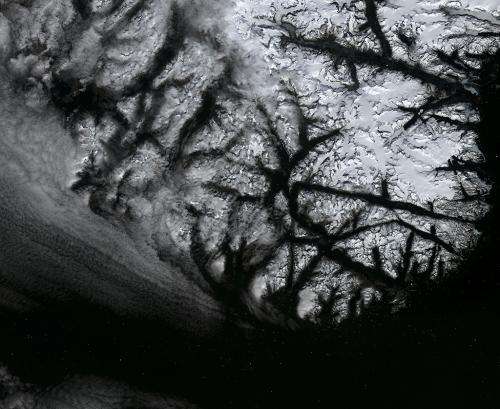Earth from space: Ice in motion

Clouds blur our view of the snow below in parts of this image acquired over the southern tip of Greenland by the Landsat-8 satellite on 30 May.
Long fjords reach far inland and, zooming in on the tips of some of their 'fingers', we can see ice streams that drain the Greenland ice sheet.
Covering more than 2 000 000 sq km, Greenland is the world's largest island and home to the second largest ice sheet after Antarctica. The ice sheet is so massive that, if it were to melt, global sea levels would rise by an estimated 7 m. It is therefore crucial to monitor the mass of ice sheets and how fast they are melting.
Satellites are the perfect for this task. Radars on satellites are particularly suited for monitoring polar regions because they can acquire images through any weather conditions, day or night.
In a study published last year, scientists used data from 10 different satellite missions to produce the most accurate assessment ever of ice losses from Greenland and Antarctica. They discovered that the rate of ice sheet melting is increasing.
The study showed that many areas in Greenland – especially along the coast – are losing up to one metre of ice thickness per year. This loss of ice is one of the major contributors to sea-level rise.
Between 1992 and 2012, Greenland alone was responsible for adding about 7 mm to the average global sea level.
In the lower part of the image, white dots speckle the North Atlantic Ocean, like stars in the night sky. These are icebergs that – although they appear insignificant in this image – pose a major threat to ships.
This is another area where satellites can step in. Satellite radars supplement aerial surveys of icebergs to help steer vessels away from a potential collision.
Data from the upcoming Sentinel-1 mission, being developed by ESA for Europe's Copernicus programme, will be used for operational satellite monitoring.
Provided by European Space Agency
















